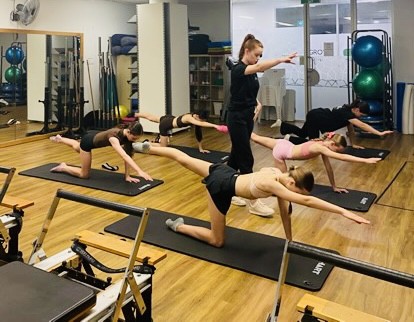Returning to exercise after giving birth
Many women are very keen to return to sport after giving birth. Returning to physical activity has many benefits including weight loss, muscle toning, social interaction and improved mood. Not to mention the very important “Me” time. While it’s exciting to get back into your pre pregnancy exercise routine, you need to take care so that you’re not doing more harm to your body than good. It’s important to gradually return to exercise and not just jump straight in. It’s also important to note that every woman is different and that appropriateness of returning to certain exercises will vary from woman to woman. Below are some guidelines to help you on your way:
0-6 weeks post birth
This is the time to take things fairly easy and let yourself settle into a routine with your new baby. It’s important to commence gentle pelvic floor exercises once you are comfortable to do so. Short walks and gentle stretching are also safe to do. Avoid going swimming or getting in the pool until one week after you have stopped bleeding or your stitches have healed to avoid infection (usually after 6 weeks).
6-12 weeks post birth
By six weeks you may have settled in with your new baby and your body is now ready to start doing a little bit more. Low impact activities such as longer walks, swimming, cycling, light weights, Pilates or yoga are ideal to start you back into an exercise routine. Exercises that focus on core strength are a great way to start reshaping your body . Ensure that you are doing the correct exercises for post natal women by consulting with a Women’s Health Physiotherapist or qualified post-natal Pilates instructor. Continue with pelvic floor exercises.
3-6 months post birth
This is the time to take things fairly easy and let yourself settle into a routine with your new baby. It’s important to commence gentle pelvic floor exercises once you are comfortable to do so. Short walks and gentle stretching are also safe to do. Avoid going swimming or getting in the pool until one week after you have stopped bleeding or your stitches have healed to avoid infection (usually after 6 weeks).
6-12 weeks post birth
By six weeks you may have settled in with your new baby and your body is now ready to start doing a little bit more. Low impact activities such as longer walks, swimming, cycling, light weights, Pilates or yoga are ideal to start you back into an exercise routine. Exercises that focus on core strength are a great way to start reshaping your body . Ensure that you are doing the correct exercises for post natal women by consulting with a Women’s Health Physiotherapist or qualified post-natal Pilates instructor. Continue with pelvic floor exercises.
3-6 months post birth
This is the time when your body is usually ready to return to some higher intensity exercise. Generally it is now ok to get back into jogging by gradually increasing your speed and distance. Higher impact sports like tennis, netball and volleyball may also be appropriate at this stage. Keep in mind, however, that if you are still breastfeeding or if your periods have not returned, your hormones may not have returned to their pre-pregnancy level and you may be more susceptible to injury. Consequently care should be taken with these higher impact activities. Of course, continuing with your pelvic floor exercises is still very important.
6 months onwards
By this stage you should be ok to participate in all activities, including higher intensity running, contact sports and heavier weights, provided that you are not experiencing any pain or symptoms of incontinence or prolapse. It’s important to continue pelvic floor exercises even if you are not experiencing any signs of weakness. This should become part of your daily routine and will lower your risk of experiencing any pelvic floor dysfunction in the future.
.svg)
.jpg)




